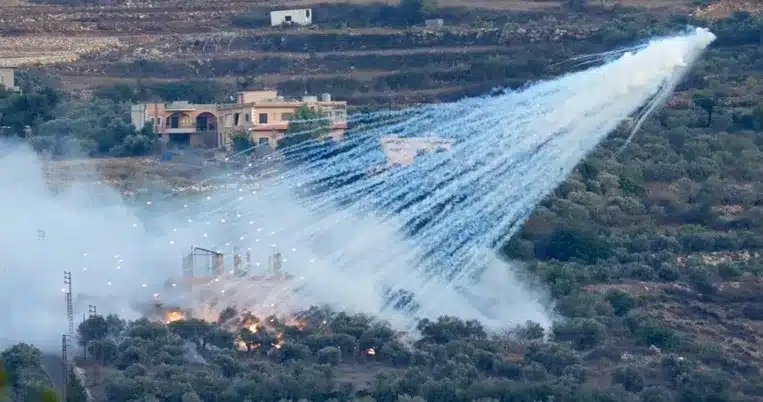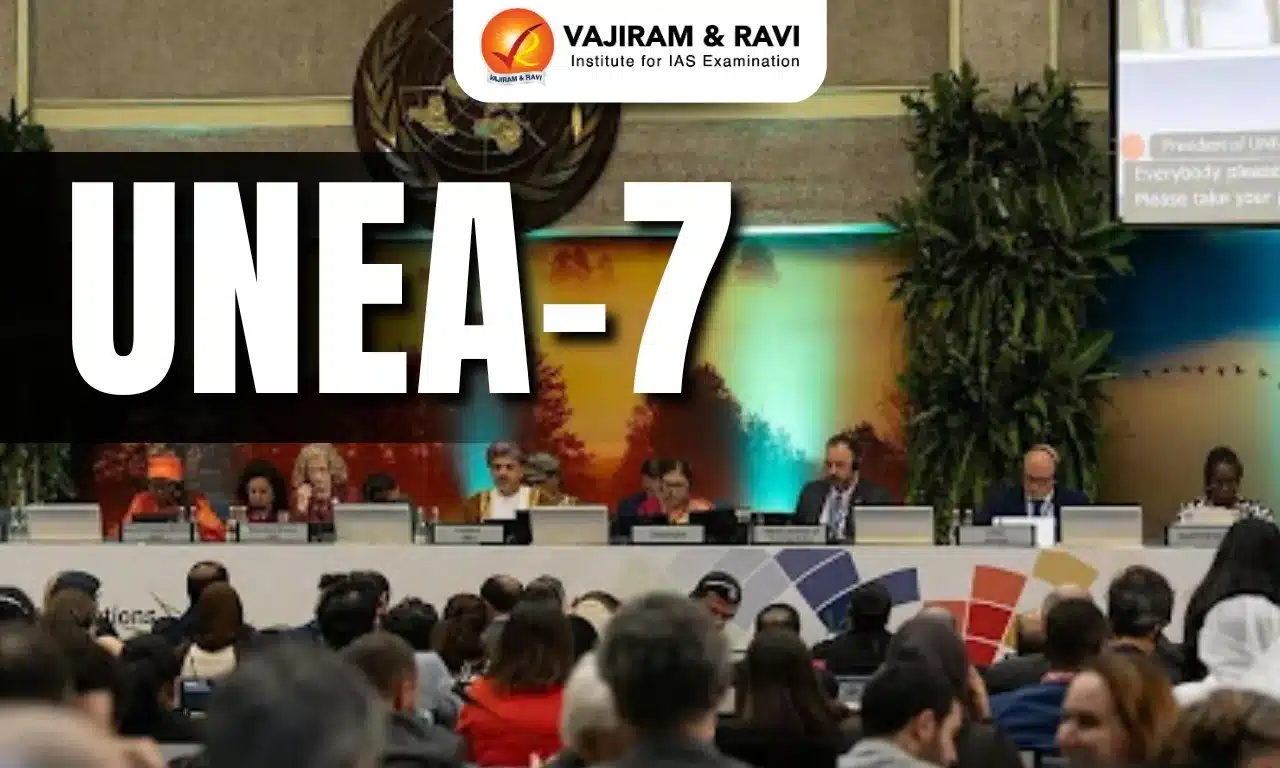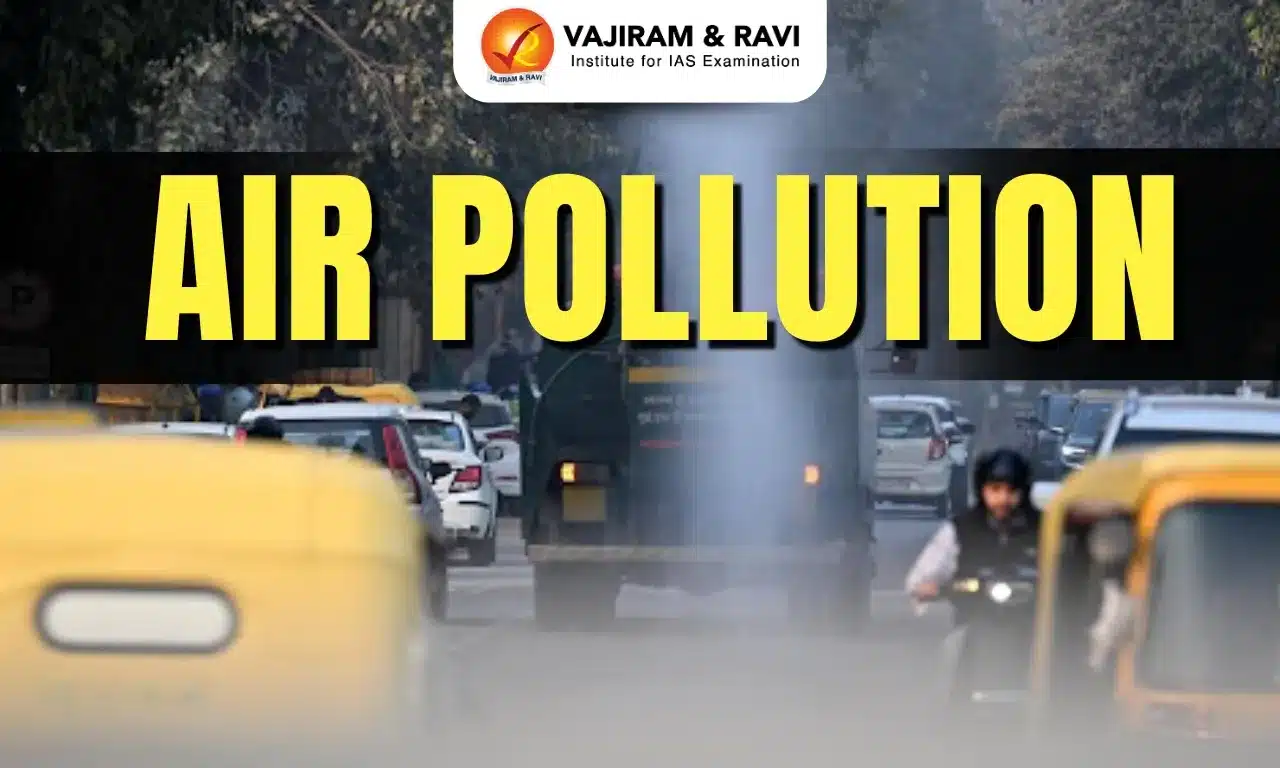What’s in today’s article?
- Why in News?
- What is White Phosphorus?
- Military uses of white phosphorus
- What are the harmful effects of white phosphorus?
- What is the use of white phosphorus munitions?
- What is the legal status of white phosphorus munitions?
Why in News?
A global human rights group has claimed that Israel used white phosphorus incendiary shells on homes in at least five towns and villages in conflict-affected southern Lebanon.
Human Rights Watch (HRW) reported no evidence of burn injuries from white phosphorus in Lebanon but noted possible respiratory damage. Human rights advocates argue that using these munitions in populated areas is a crime under international law.
Israel claims it uses white phosphorus only as a smokescreen, not to target civilians.
In October 2023, Israel was accused of using white phosphorus in residential areas. This occurred shortly after clashes began between the Israeli military and Hezbollah along the southern Lebanon-Israel border, following the outbreak of the Israel-Hamas war on October 7.
What is White Phosphorus?
- White phosphorus is a pyrophoric that ignites when exposed to oxygen, producing thick, light smoke as well as intense 815-degree Celsius heat.
- Pyrophoric substances are those which ignite spontaneously or very quickly (under five minutes) when in contact with air.
- Under the Globally Harmonized System of Classification and Labeling of Chemicals, white phosphorus falls under “Pyrophoric solids, category 1”.
- This category includes chemicals that catch fire spontaneously when exposed to air.
- White phosphorus emits a distinct garlic-like odour.
Military uses of white phosphorus
- White phosphorus is dispersed in artillery shells, bombs, and rockets. It can also be delivered via felt (textile) wedges soaked in the chemical.
- Its primary military use is as a smokescreen — used to hide troop movement on the ground. The smoke acts as a visual obscurant.
- White phosphorus is also known to mess with infrared optics and weapons tracking systems, thus protecting forces from guided missiles.
- Munitions can either be ground-burst for more concentrated smoke, or air-burst in order to cover a larger area.
- White phosphorus can also be used as an incendiary weapon.
What are the harmful effects of white phosphorus?
- Upon exposure, white phosphorus can cause severe burns, often down to the bone.
- The burns are excruciatingly painful, difficult to heal, and susceptible to infections.
- Particles of white phosphorus that remain lodged the body can reignite if in contact with air.
- Inhaling white phosphorus particles or smoke can cause respiratory damage and harm to internal organs.
- Those who survive initial injuries often experience a lifetime of suffering — with impaired mobility and painful, horrific scars.
- White phosphorus can also devastate infrastructure and property, damage crops and kill livestock, with raging fires, especially in windy conditions.
What is the use of white phosphorus munitions?
- Irish nationalists in the late 19th century first used white phosphorus munitions, in a formulation that became known as “Fenian fire”.
- Fenian was an umbrella term for the Irish nationalists.
- World War I saw extensive use of the chemical by the British and Commonwealth forces in phosphorus grenades, bombs, shells and rockets.
- These munitions have since been used in conflicts around the world, from the Normandy invasion in World War II to the US invasion of Iraq in 2004 and the long-drawn Nagorno-Karabakh conflict.
- Most recently, Russia was accused of using white phosphorus bombs during the invasion of Ukraine last year.
What is the legal status of white phosphorus munitions?
- Use is regulated
- White phosphorus munitions are not under a blanket ban, though their use is regulated under the International Humanitarian Laws.
- Not considered a chemical weapon
- It is not considered a chemical weapon because its operational utility is primarily due to heat and smoke, rather than toxicity.
- Thus, its use is governed by the Convention on Conventional Weapons (CCW), specifically Protocol III, which deals with incendiary weapons.
- Palestine and Lebanon have joined Protocol III, while Israel has not ratified the protocol.
- Incendiary weapons are weapons that use fire and heat to set fire to objects or cause burn or respiratory injury to people.
- Protocol III of CCW regulates the use of incendiary weapons
- Protocol III prohibits the use of airdropped incendiary weapons in concentrations of civilians.
- However, it has two significant loopholes.
- First, it restricts some but not all use of ground-launched incendiary weapons where there are concentrations of civilians.
- Second, the protocol’s definition of incendiary weapons covers weapons that are primarily designed to set fire to and burn people.
- It excludes multipurpose munitions such as those containing white phosphorus, which are considered to primarily be “smoking” agents.
Q.1. What is Human Rights Watch (HRW)?
Human Rights Watch (HRW) is an international non-governmental organization headquartered in New York City that conducts research and advocacy on human rights..
Q.2. What are Pyrophoric solids?
Pyrophoric solids are solids that can ignite spontaneously in air within five minutes of coming into contact with it, even in small quantities. They are classified as Category 1 by HazCom 2012 and are considered highly hazardous.
Source: Rights group claims Israel has hit residential buildings with white phosphorous in Lebanon | HRW
Last updated on December, 2025
→ Check out the latest UPSC Syllabus 2026 here.
→ Join Vajiram & Ravi’s Interview Guidance Programme for expert help to crack your final UPSC stage.
→ UPSC Mains Result 2025 is now out.
→ UPSC Notification 2026 is scheduled to be released on January 14, 2026.
→ UPSC Calendar 2026 is released on 15th May, 2025.
→ The UPSC Vacancy 2025 were released 1129, out of which 979 were for UPSC CSE and remaining 150 are for UPSC IFoS.
→ UPSC Prelims 2026 will be conducted on 24th May, 2026 & UPSC Mains 2026 will be conducted on 21st August 2026.
→ The UPSC Selection Process is of 3 stages-Prelims, Mains and Interview.
→ UPSC Result 2024 is released with latest UPSC Marksheet 2024. Check Now!
→ UPSC Prelims Result 2025 is out now for the CSE held on 25 May 2025.
→ UPSC Toppers List 2024 is released now. Shakti Dubey is UPSC AIR 1 2024 Topper.
→ UPSC Prelims Question Paper 2025 and Unofficial Prelims Answer Key 2025 are available now.
→ UPSC Mains Question Paper 2025 is out for Essay, GS 1, 2, 3 & GS 4.
→ UPSC Mains Indian Language Question Paper 2025 is now out.
→ UPSC Mains Optional Question Paper 2025 is now out.
→ Also check Best IAS Coaching in Delhi

















